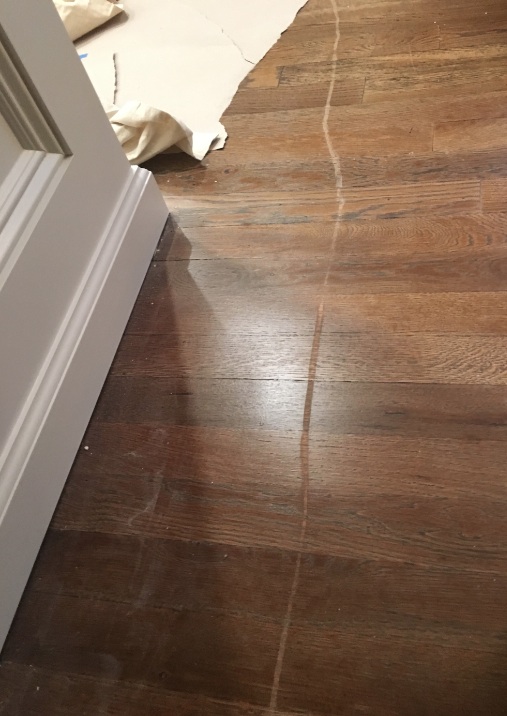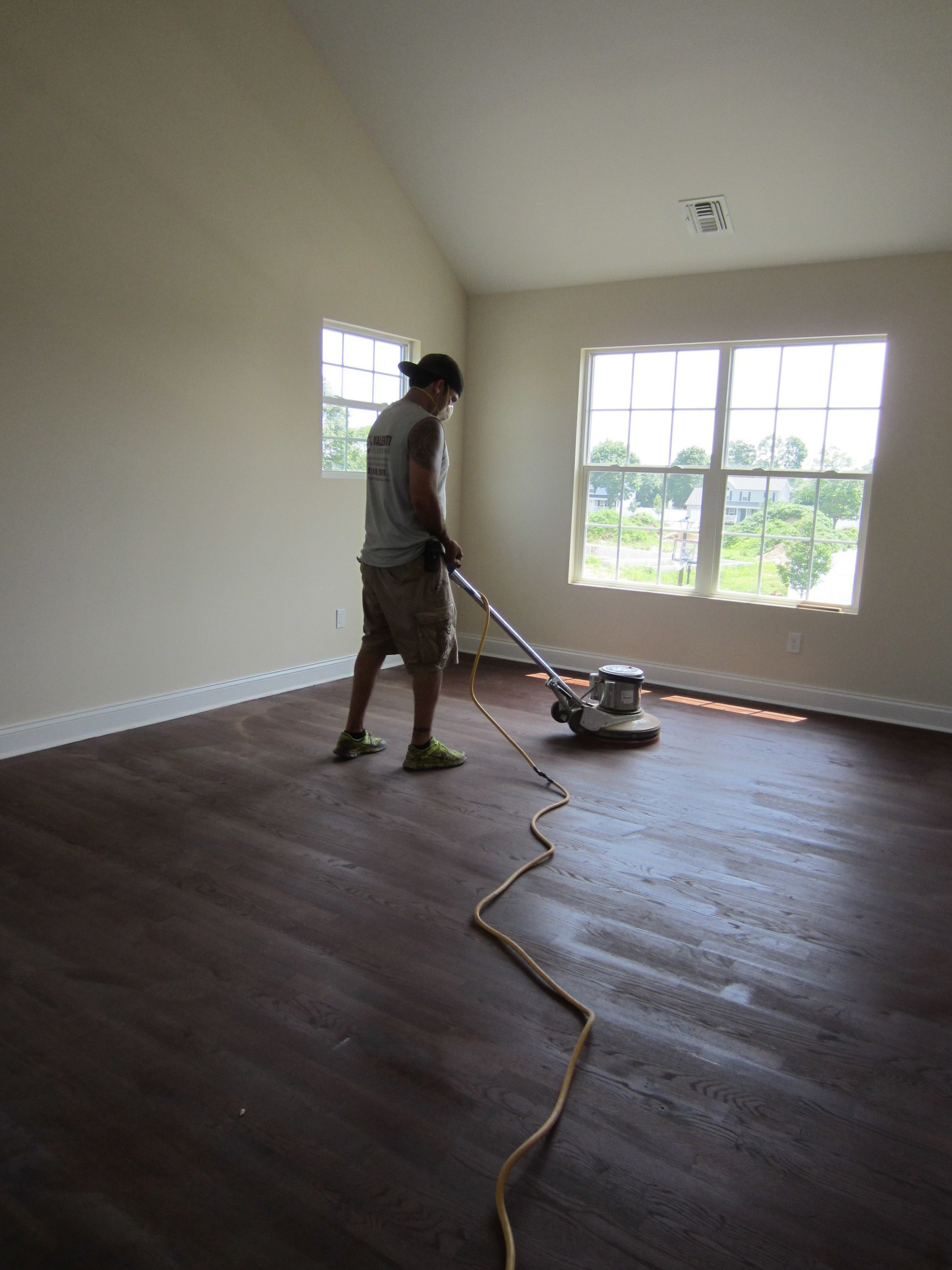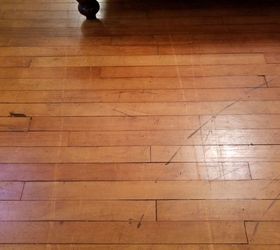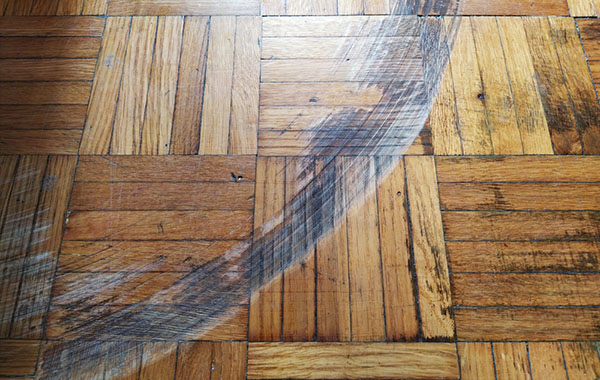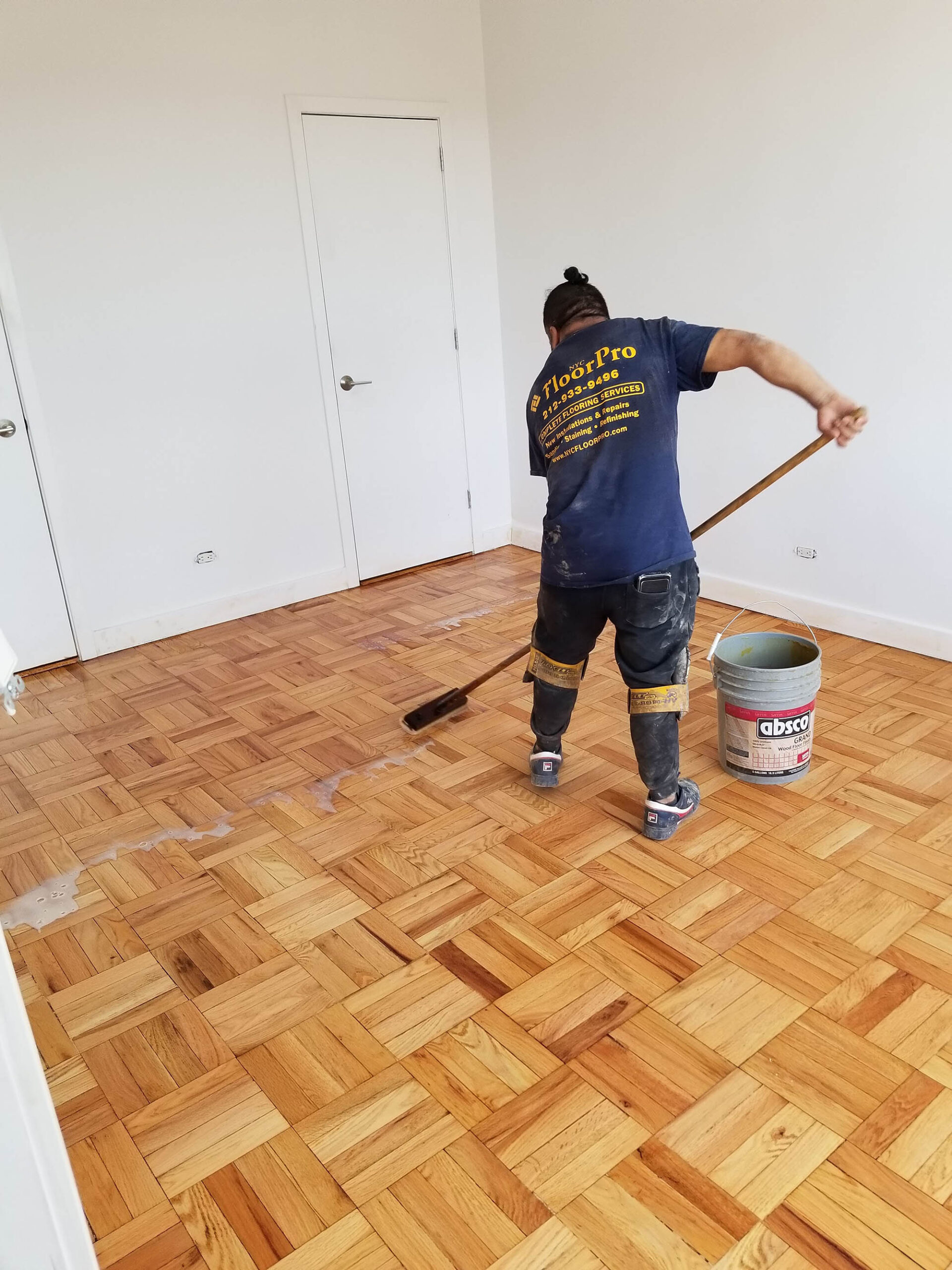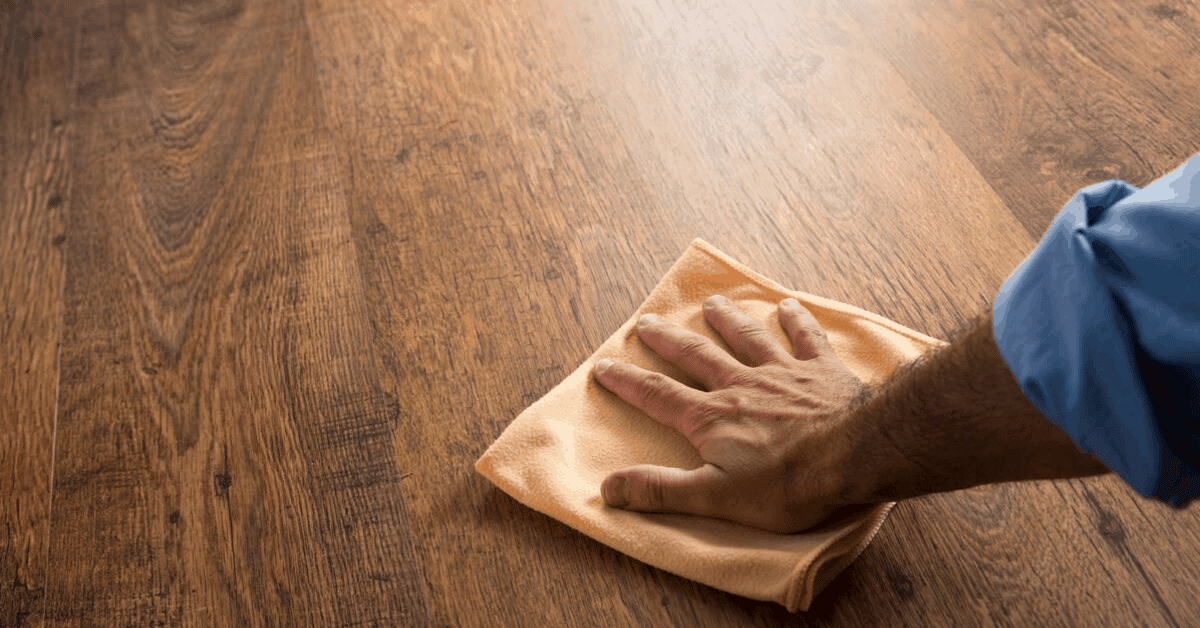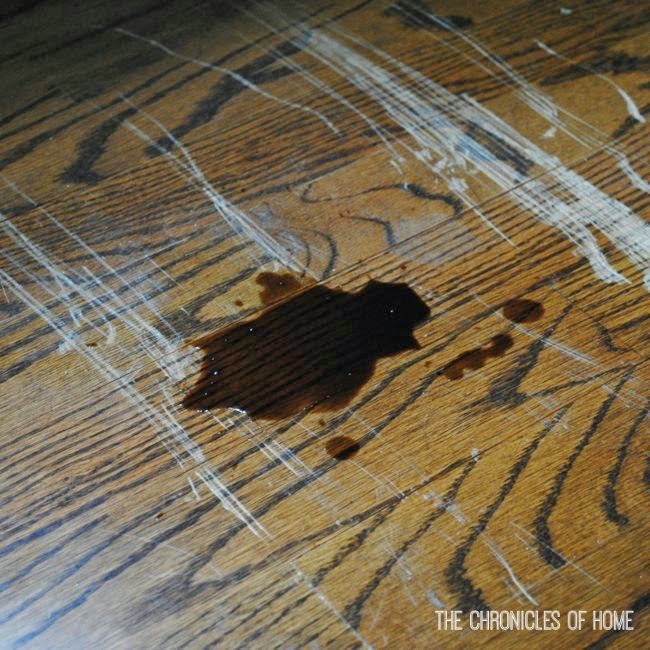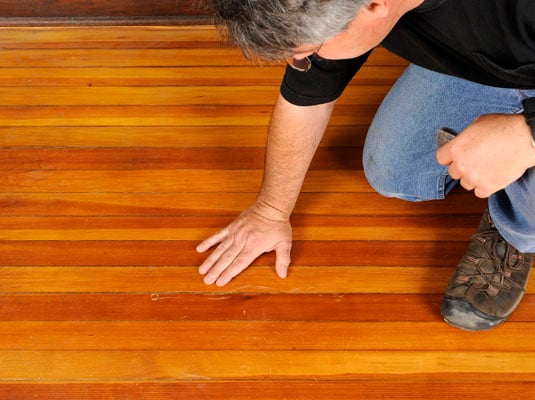Understanding the Types of Hardwood Floor Scratches
Hardwood floors are a beautiful addition to any home, but over time, they can develop scratches that mar their appearance. Understanding the types of hardwood floor scratches is essential for effective repair and maintenance. Below we provide you with a comprehensive guide to identifying and assessing damage, helping you determine the best course of action to restore your floors to their former glory.
- Surface Scratches: Surface scratches are the most common type of damage found on hardwood floors. These scratches are usually shallow and affect only the top layer of the finish. They are often caused by everyday wear and tear, such as moving furniture or pets’ claws. To identify surface scratches, run your finger lightly over the affected area; if you can’t feel the scratch, it’s likely a surface scratch.
- Deep Scratches: Deep scratches penetrate beyond the surface and into the wood itself. They are typically more noticeable and may require more extensive repair work. Deep scratches can occur due to heavy furniture being dragged across the floor, sharp objects being dropped, or pet accidents. To identify deep scratches, examine the affected area closely; if you can see the scratch, it likely requires more attention.
- Gouges: Gouges are more severe than deep scratches and occur when a chunk of wood is physically removed from the floor. They can be caused by accidents involving heavy objects or sharp tools. Gouges are easily identifiable as they leave a noticeable hole or indentation in the wood.
- Water Damage: Water damage is another common issue that can affect hardwood floors. It can result from spills, leaks, or high humidity levels. Water damage often manifests as dark spots or stains on the wood, and if left untreated, it can lead to warping or buckling of the floorboards. To identify water damage, look for discoloration, swelling, or a soft and spongy feeling in the affected areas.
- Wear Patterns: Wear patterns refer to areas of the floor that have experienced consistent foot traffic over time. These patterns can appear as dull and worn spots on the surface of the wood. While not technically scratches, wear patterns can affect the overall appearance of the floor and may require specific attention during the buffing and refinishing process.
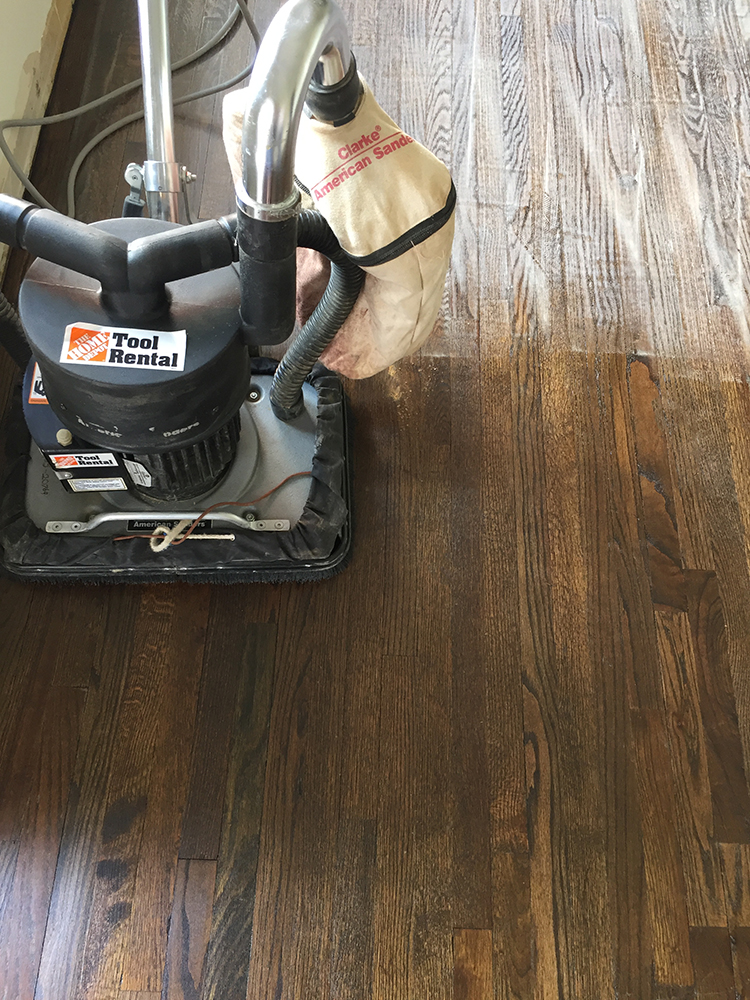
DIY Buffing Techniques
Minor scratches on hardwood floors can be a nuisance, but the good news is that many of them can be repaired with some simple DIY buffing techniques. We will guide you through step-by-step instructions to remove minor scratches and restore the beauty of your hardwood floors without the need for professional help.
Gather Your Supplies: Before you begin, gather the necessary supplies. You will need a soft cloth, fine-grit sandpaper, a buffing pad or sponge, a hardwood floor cleaner, and a high-quality hardwood floor polish or wax. Ensure that the products you choose are suitable for your specific type of hardwood floor.
Clean the Area: Start by cleaning the scratched area thoroughly. Use a hardwood floor cleaner and a soft cloth to remove any dirt or debris. This step is crucial as it ensures a clean surface for the buffing process.
Sand the Surface: If the scratch is still visible after cleaning, gently sand the surface using fine-grit sandpaper. Sand in the direction of the grain to avoid further damage. Be careful not to apply excessive pressure, as it may remove too much of the finish.
Buff the Area: Once the surface is smooth, attach a buffing pad or sponge to a buffer or a handheld polisher. Apply a small amount of hardwood floor polish or wax to the pad or sponge and gently buff the scratched area in a circular motion. Continue buffing until the scratch blends in with the surrounding area.
Clean and Inspect: After buffing, clean the area again to remove any residue from the polish or wax. Inspect the repaired area under different lighting conditions to ensure that the scratch is no longer visible. If necessary, repeat the buffing process until you achieve the desired result.
Apply a Protective Finish: To protect the repaired area and prevent future scratches, consider applying a protective finish to the entire floor. This will help maintain its shine and durability. Follow the manufacturer’s instructions for applying the finish and allow it to dry completely before using the floor.
Professional Buffing Services
While DIY buffing techniques can work well for minor scratches, deep scratches on hardwood floors may require the expertise of a professional. Let’s discuss when and why you should consider hiring an expert for deep scratch removal. Understanding the benefits of professional buffing services will help you make an informed decision about the best course of action for your hardwood floors.
Expertise and Experience: Professional buffing service providers have the knowledge, skills, and experience necessary to handle deep scratches effectively. They understand the complexities of different types of hardwood floors and can assess the damage accurately. Their expertise ensures that the repair process is done correctly, minimizing the risk of further damage.
Specialized Equipment: Professional buffing services utilize specialized equipment that is not typically available to homeowners. These tools, such as industrial-grade buffers and sanders, allow for precise and efficient scratch removal. The use of professional-grade equipment ensures high-quality results that may be challenging to achieve with DIY methods.
Deep Scratch Repair Techniques: Deep scratches require more than just surface-level buffing. Professional service providers have access to advanced techniques for deep scratch repair, such as color-matching fillers, epoxy resins, or wood putty. These materials and techniques help to seamlessly repair and restore the damaged area, leaving no visible traces of the scratch.
Time and Convenience: Repairing deep scratches on hardwood floors can be a time-consuming process, especially for those with limited experience. Hiring a professional allows you to save time and effort. The experts will handle all the necessary steps, from assessing the damage to completing the repair work, allowing you to focus on other priorities.
Long-Term Value: Investing in professional buffing services for deep scratch removal can add long-term value to your hardwood floors. A well-executed repair job can extend the lifespan of your flooring, enhance its appearance, and maintain its structural integrity. This can be particularly beneficial if you plan to sell your home or want to preserve the beauty of your hardwood floors for years to come.
Preventive Measures Tips
Preventing scratches on your hardwood floors is essential to maintain their pristine appearance and prolong their lifespan. Below we provide you with valuable tips and tricks to minimize scratches and protect your hardwood floors from damage. By implementing preventive measures, you can enjoy beautiful and well-maintained floors for years to come.
Use Protective Mats and Rugs: Place protective mats or rugs in high-traffic areas, such as entryways and hallways. These mats will help trap dirt, grit, and moisture, preventing them from scratching or damaging the floor. Make sure to choose mats with non-slip backing to avoid any accidents.
Apply Felt Pads: Attach felt pads to the bottom of furniture legs, especially chairs, tables, and other heavy pieces. Felt pads provide a cushioning effect and help prevent the furniture from scratching the hardwood floor when moved or rearranged. Regularly check and replace worn-out or damaged felt pads.
Trim Pet’s Nails: If you have pets, keep their nails trimmed regularly. Long nails can cause deep scratches on hardwood floors, especially when pets run or play. Additionally, consider using pet-friendly nail covers or mats in areas where your pets spend a lot of time to protect the floor from scratches.
Avoid High Heels and Sharp Objects: Discourage walking on hardwood floors with high heels or shoes that have sharp or damaged soles. These types of footwear can easily cause scratches and dents. Likewise, avoid dragging or sliding sharp objects across the floor, as they can leave deep marks.
Clean Regularly and Properly: Regular cleaning is essential to minimize scratches on hardwood floors. Use a soft-bristle broom or a microfiber dust mop to remove dirt, dust, and debris. Avoid using abrasive cleaners, harsh chemicals, or excessive water, as they can damage the finish and lead to scratches. Instead, opt for a hardwood floor cleaner recommended by the manufacturer.
Maintain Humidity Levels: Hardwood floors can be sensitive to changes in humidity levels. Excessively dry or humid conditions can cause the wood to contract or expand, leading to gaps or warping. To maintain stable humidity levels, use a humidifier or dehumidifier if necessary, and keep the room well-ventilated.
Maintenance and Care
Regular maintenance and proper care are key to preserving the shine and protecting your hardwood floors from future scratches. Here are some essential tips and techniques to maintain the beauty of your hardwood floors, ensuring they remain in excellent condition for years to come.
Sweep or Vacuum Regularly: Regular sweeping or vacuuming is essential to remove dirt, dust, and debris that can act as abrasives and cause scratches over time. Use a soft-bristle broom or a vacuum cleaner with a hardwood floor attachment to gently clean the surface. Be sure to pay attention to hard-to-reach areas, such as corners and under furniture.
Use a Damp Mop for Cleaning: Occasionally, you may need to give your hardwood floors a deeper clean. When doing so, use a damp mop rather than soaking the floor with water. Excess water can seep into the wood and cause warping or damage. Use a hardwood floor cleaner specifically designed for your type of flooring and follow the manufacturer’s instructions.
Wipe up Spills Immediately: Spills can quickly damage hardwood floors if left unaddressed. Whenever a spill occurs, wipe it up immediately using a soft cloth or paper towel. Be gentle and avoid rubbing the spill, as this can spread the liquid and potentially damage the finish. If needed, use a hardwood floor cleaner to remove any residue.
Avoid Excessive Sun Exposure: Direct sunlight can fade and discolor hardwood floors over time. To protect your floors from excessive sun exposure, use window coverings such as blinds or curtains. Additionally, consider rearranging furniture periodically to ensure even exposure to sunlight and prevent uneven fading.
Use Protective Pads: Place protective pads or coasters under furniture legs to prevent them from scratching or denting the floor when moved. Ensure that these pads are clean and in good condition to avoid any debris or dirt that may cause scratches.
Schedule Professional Maintenance: Periodic professional maintenance is recommended to keep your hardwood floors in optimal condition. Professional maintenance may involve deep cleaning, buffing, and applying a protective finish. Consult with a reputable flooring professional to determine the appropriate timing and frequency for professional maintenance based on your specific flooring needs.
How to Fix Scratches on Hardwood Floors
Ways to Fix Scratches on Hardwood Floors
Hardwood Floor Scratch Repair: Keep Your Floor Looking New
Fix Scratched Hardwood Floors in About Five MInutes – The
What is a screen and re-coat (aka a buff and coat) and will it
FIX A WHITE FLOORING SCRATCH Hardwood Floor Scratch Repair
How to Fix Scratches In Hardwood Floors – dummies
Cat Scratch Fever (How to Fix Scratches in Wood Floors) The Rozy Home
Related Posts:
